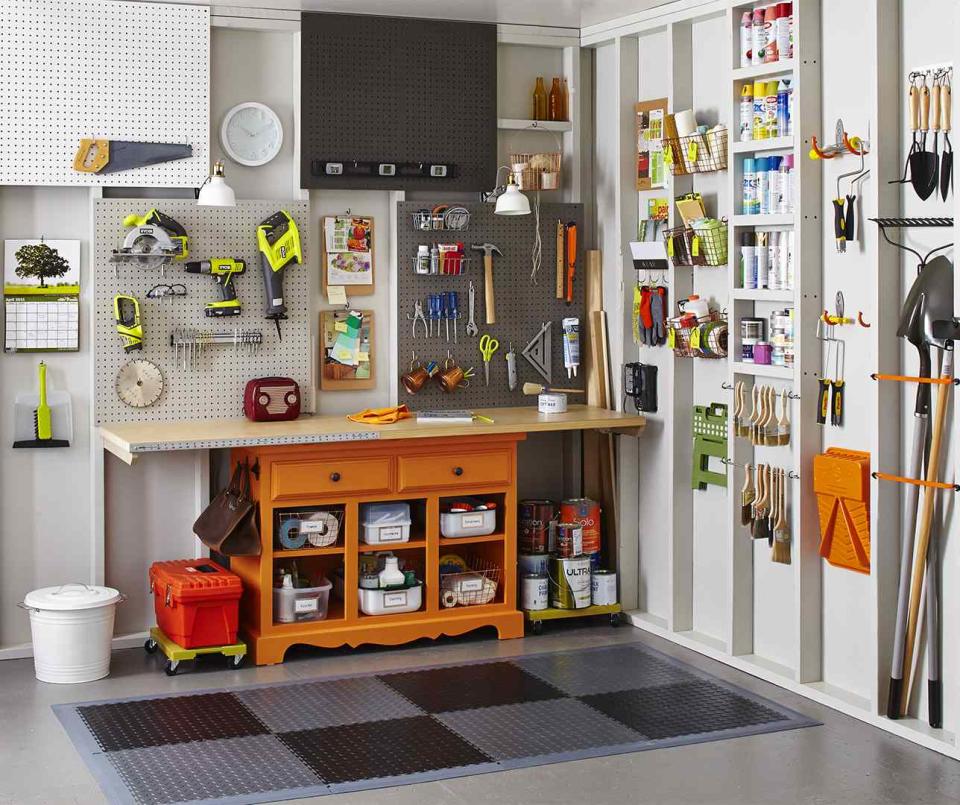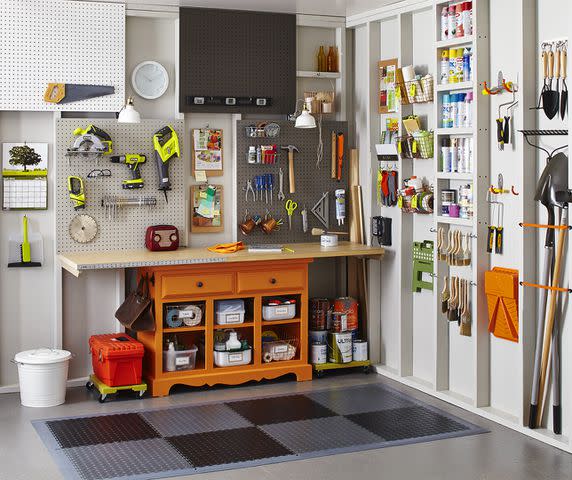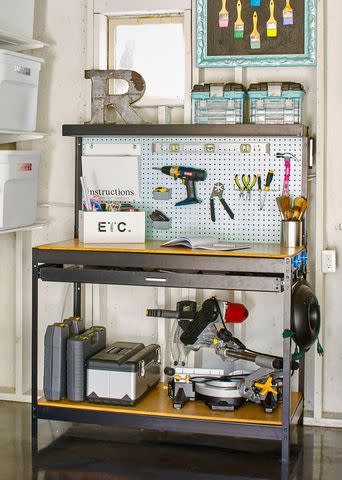9 Power Tool Storage Ideas to Keep Your Most-Used Items Tidy
Keep your tools sorted and safeguarded with these smart storage suggestions.

Whether you're a devoted DIYer or only dabble in handiwork only when necessary, your power tools deserve to be handled with care. These small-yet-mighty investments will last longer and perform better if they’re kept properly protected. Plus, keeping tools organized means you can quickly find and retrieve what you need without hassle.
Take inspiration from the following ideas to tackle your collection. Be mindful, however, that regardless of the method you choose, safety should always be at the forefront of your mind. Guard any dangerous parts and blades to avoid accidents, never leave tools on the floor, remove batteries to prevent leaks, and remember that all tools should remain out of reach from little hands. Depending on your home’s setup, the garage or a shed makes the ideal location for power tool storage.

Related: 10 Genius DIY Garage Storage Ideas That Eliminate Clutter
1. Repurpose a Workbench
If you’ve amassed a number of tools over the years, you might already own a workbench. But if you don’t, consider adding one since they provide both storage and surface space to work on. Look for a sufficiently sized workbench that’s equipped with outlets and USB ports so you can charge your power tools in the same place they’re stored.
As for your current setup, think about reorganizing it to be more efficient. Declutter what you no longer need and re-home items that are used infrequently so you can create room for power tools to sit. Either attach a power strip to the workbench and move it near an outlet or have an electrician install a new one. You’ll most likely need to comply with residential electrical codes if rewiring is involved, so weigh the cost and time involved before going this route.
Related:
2. Create a Charging Station
If you don’t have the space or the need for a workbench, a charging is the next best option for power tool storage. Similar to a docking stand that simultaneously stores and charges mobile devices, such as your phone, wireless earbuds, and smartwatch, a power tool charging station can achieve the same result. You can either buy an organizer that fits your needs or, if you’re handy, make your own.
Once it’s mounted on the wall, use it to dock your drills, stand small types of saws (think circular saws and jigsaws), and sort your variety of sanders with their corresponding papers. The most important thing is that it has a spot or slot to store each of your tools plus their chargers and batteries. Of course, it will also need to be placed near a power source.
Related: The 9 Best Cordless Drills of 2023, According To Testing

3. Position Tools on a Pegboard
Another common (yet underutilized) organizer in the garage is a pegboard. Perhaps you have one that holds a handful of tools—primarily the most often reached-for ones like screwdrivers or hammers. In this case, reorganize them to make room for your power tools to join. Use sturdy brackets for their handles and include small shelves or baskets for the batteries and chargers. Hang the pegboard on a blank garage or shed wall, keeping the floor space clear and uncluttered.
4. Employ a Rolling Cart
Much like a charging station, you can either buy a basic cart for this idea or use your DIY skills to build one. Whichever route you choose, make sure it has wheels (or add casters to the bottom) because mobility is key. Load it up with your power tools and their parts and then roll it to a power source when they need to charge or be used. Stow it away somewhere safe and out of the way when you’re done.
5. Clear Out a Storage Cabinet
For those who own a substantial amount of power tools, you may need to dedicate an entire cabinet to storing them. Opt for one that comes on caster wheels with brakes so it can be moved when necessary and locked in place when not in use. Speaking of locks, look for a cabinet that has one so you can have peace of mind that your valuable tool collection is secured and not accessible to kids. Assign each shelf a purpose, store similar items together, and use labeled containers to organize accessories.
6. Designate Drawers
If you currently have a garage shelving system or are thinking about installing one, consider adding or including deep enough drawers to store power tools. The beauty of track systems is that they’re customizable and adjustable, allowing you to modify the storage over time. Start with one or two drawers to arrange your tools and use dividers to prevent them from rubbing against each other and organizers for their parts. Build on as needed and label the outside of the drawers so everything gets put back where it belongs.
Related: 27 Genius Garage Organizer Ideas and Products for a Manageable Space
7. Install Floating Shelves
Rarely used power tools don’t need to take center stage or occupy precious real estate on a pegboard wall, especially if space is limited. In this case, hang durable shelves high on an empty wall in the garage or shed. Then, line up the tools, keeping like items near one another. Lean a sturdy step stool nearby so, when you do need one, you can grab it with ease. Even so, it’s best to avoid storing anything too heavy on shelves like these to avoid an unnecessary injury.
8. Utilize Original Storage
This tip seems simple enough, but it’s a good reminder that many power tools come with carry bags or cases. These are designed to hold the tool itself, plus batteries, chargers, and any other accessories that come with purchase. If you use the tools often, taking them in and out of the bag or case can be a hassle, so you'll likely want to try applying one of the ideas mentioned above instead.
But for tools you don't use often, you can keep power tools protected in their original storage bags and place those on an open shelf or inside a cabinet. This is an easy way to keep cords and batteries from getting mixed up, because you can store each tool's accessories in the corresponding bag.
9. Stow Away Seasonal Tools
During cold, winter months, there are probably a few tools that won't be used again until warmer weather hits. You can store these away for the season, but do so smartly. Ensure that they’re clean of debris and completely dry. Remove and store batteries inside if possible, and apply lubricating oil to prevent rust. Store them in their original cases (if you still have them) or in labeled bins and tuck them away on a high shelf.
If you find there are tools you no longer use, consider donating or selling them to free up space for others. You can always rent something from a tool library if you only need a specific power tool every so often, rather than buying and storing it year-round.
Related: How to Store Garden Tools During the Winter to Prevent Rusting
For more Better Homes & Gardens news, make sure to sign up for our newsletter!
Read the original article on Better Homes & Gardens.

